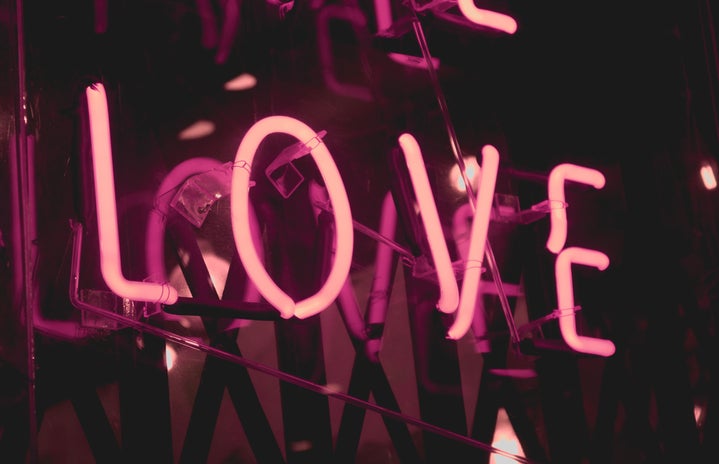The color pink has always been a source of contention, especially in terms of gender dynamics. Beyond the battle of how pink and blue emerged as defining how girls and boys are categorized (you can read more about that here), the blush tone has strong associations with how we perceive femininity.
Before I dive in, I want to preface that I am approaching this with a broad lens, generalizing the societal assignment of pink as the dominant color for women. I understand this is a generalization, it overlooks nuance. However, I want to reiterate that while this may be a sweeping generalization, it is still reflective of society’s association with pink and femininity. I am speaking mostly from my experiences, as well as what my peers have shared with me. I will also reference women and girls often, however I want to emphasize that any gender identity can be impacted by pink’s connection to femininity.
From infancy, those assigned female at birth are typically allocated the color pink as their “gender’s color,” so to speak. Pink dominates society’s perception of female-hood. Young girls are dressed in pink, gifted pink blankets, and advertised pink toys in store aisles. Girls are told to love pink, but once they do, they are told to stop being so girly. The idea of what constitutes being a girl is so heavily pushed by society, that once a girl decides what she likes (whether it is deemed “girly” or not), the world still has something to say.
Pink boxes us in. It defines us as women, but not necessarily as strong women. Pink is girly, feminine, and sometimes deemed too much. Girls want to be seen as strong, yet boys are the ones who are marketed G.I. Joes, asked to help the teacher when something is heavy, and assigned the color blue. Girls are advertised kitchen sets, baby dolls, and play makeup sets. On the occasion that companies want to sell something deemed more masculine to girls, they will simply make the product pink as an attempt to supposedly make it more appealing to the gender. Discussing how blue and its assignment to boys has strong connotations with strength is an entirely different article, but its contrast with pink and dainty femininity undoubtedly harbors resentment for female-identifying individuals, particularly teenaged ones. As we enter adolescence, resentment and insecurities flourish. The world is judgmental, and the color pink can feel suffocating. The urge to detach from defining elements from childhood is strong. One prominent factor from girlhood is, of course, the color pink.
Growing up in a world that projects femininity on girls, simply because of one’s gender identity, can be quite isolating. As girls enter puberty and endure changes in their hormones, many report a loss of confidence. Pink can be a reminder of condescending projections, deterring from embracing one’s own personality. Being a girl in this world is hard, and so is figuring out what makes you feel most like yourself. Sometimes when we are trying to find ourselves, we lose ourselves in the process.
I loved pink as a child. I loved how fun and unapologetic it was. Then as I aged, I lost my childlike confidence and grew more weary about expressing myself. The clothes I wore were more muted, and I preferred not to draw attention to myself; the vibrancy of pink did not align with how I viewed myself. Growing up is hard, and the journey in embracing what it means to be a woman is difficult. Now, I love pink! But more importantly, I love myself. Embracing the things I enjoy, regardless of social constructs, has granted me a sense of freedom and confidence.
Liking the color pink is deeper than just choosing a favorite color. It is to embrace what society — dare I say the patriarchy — deemed should be our favorite color, even if we simply like the color. Society tells me to like the color pink, but I love the color pink because I love it. Reclaiming my power through announcing pink as my favorite color is not necessarily groundbreaking. It is not going to send shock waves and dismantle the patriarchy. In fact, it reinforces the patriarchy just a little bit, but through the lens of postmodern feminism, it shouldn’t matter what society thinks femininity is for me to embrace it.
Release the idea that loving what makes you feel feminine makes you any less of a valuable woman (or human being, in general). Gender is a significant part of our identities and self perception, so you should listen to the part of your soul that yearns for expression. Listen to your desires, and live your life for you.
It is not shameful to be a woman. It is not shameful to be a woman who prefers pink or blue or orange or brown. It is not shameful to embrace what makes you feel feminine. It is an act of courage and self expression to live for yourself. To live without shrinking yourself to conform to other people’s opinions is the most liberating action you can take.
Femininity can be anything you want. Whatever makes you feel most whole is up to you. But if pink is that force for you, then there should be zero shame in that. Once you start prioritizing your identity, empowerment follows.
Can’t get enough of HC UMass Amherst? Be sure to follow us on Instagram, listen to us on Spotify, like us on Facebook, and read our latest Tweets!


